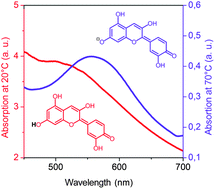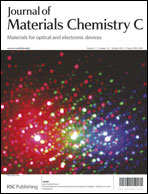First example of a non-toxic thermochromic polymer material – based on a novel mechanism
Abstract
Until now, all thermochromic materials have contained at least one toxic or carcinogenic component which is a major shortcoming for their application especially in medical or

- This article is part of the themed collection: 2013 Journal of Materials Chemistry C Hot Papers

 Please wait while we load your content...
Please wait while we load your content...